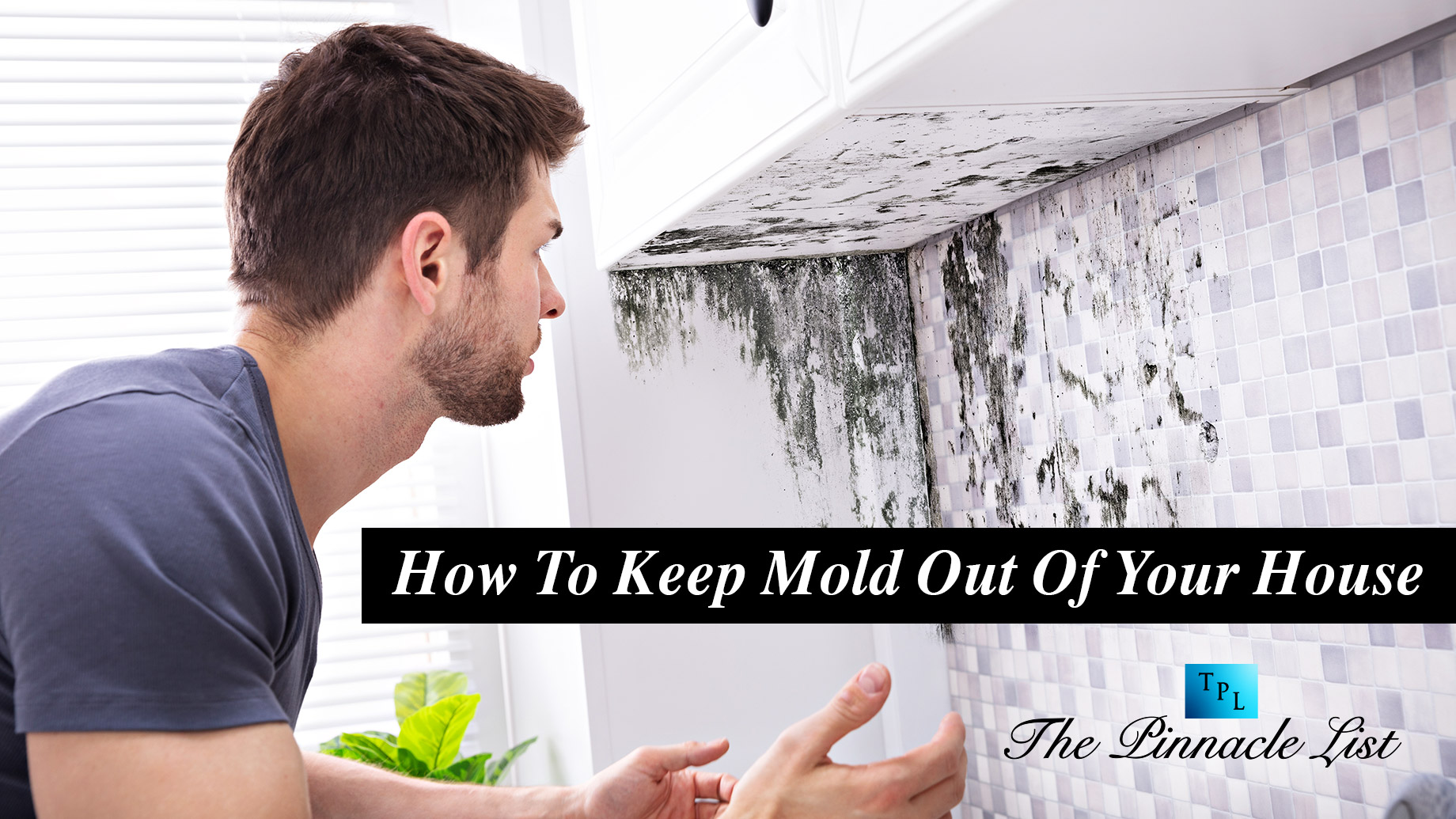
Mold is a common problem that can affect homes, causing health problems and damaging property. It thrives in moist, humid environments and can grow on a variety of surfaces, including walls, ceilings, and furniture. While it’s not always possible to completely eliminate mold from your home, there are steps you can take to prevent its growth and keep it under control. In this article, we’ll discuss how to keep mold out of your house by controlling humidity levels, repairing leaks and fixing plumbing issues, ventilating your home, cleaning and drying surfaces thoroughly, using a mold-resistant paint, and keeping clutter to a minimum.
Mold can cause a range of health problems, including allergies, asthma, and respiratory issues. It can also damage your property, causing discoloration and rot. To protect your home and your family’s health, it’s important to take preventative measures to prevent mold growth. This includes addressing moisture issues promptly and maintaining proper ventilation and humidity levels in your home.
By following the tips outlined in this article, you can help to prevent mold growth and keep your home healthy and free of this common nuisance. Whether you’re dealing with a mold problem or simply want to take preventative measures to avoid one in the future, these steps will help you keep your home mold-free and maintain a healthy living environment.
Here are some steps you can take to prevent mold growth in your home:
1. Control humidity levels
Maintaining a relative humidity level of 30-50% in your home is crucial in preventing mold growth. High humidity levels provide the perfect conditions for mold to thrive, so it’s important to take steps to reduce humidity. One way to do this is by using a dehumidifier, which will remove excess moisture from the air. You can also use an air conditioner or a fan to help circulate air and keep humidity levels in check.
2. Repair leaks and fix plumbing problems
Leaks and plumbing issues can create damp or wet conditions in your home, providing the perfect environment for mold to grow. To prevent this from happening, it’s important to regularly inspect your home for any signs of water damage or leaks. This includes checking pipes, faucets, and appliances such as washing machines and water heaters. If you do find a leak, it’s important to fix it as soon as possible to prevent further damage and the potential for mold growth.
3. Ventilate your home
Proper ventilation is essential in preventing mold growth. It helps to reduce humidity levels and allows for the circulation of fresh air. Make sure that your home has proper ventilation, including exhaust fans in the kitchen and bathroom and windows that can be opened to allow for airflow. This will help to keep the air in your home dry and reduce the risk of mold growth.
4. Clean and dry surfaces thoroughly
If an area of your home becomes wet or damp, it’s important to clean and dry it thoroughly to prevent mold growth. This includes surfaces such as walls, floors, and furniture. Use a mixture of water and a mild detergent to clean the affected area, and then dry it completely using towels or a dryer. If the area is particularly large or difficult to clean, you may need to hire a professional mold remediation company to handle the job.
5. Use a mold-resistant paint
Applying a mold-resistant paint to your walls can help to prevent mold growth. These paints contain antimicrobial agents that inhibit the growth of mold and mildew. They can be especially useful in areas of your home that are prone to moisture, such as the bathroom and basement. When applying mold-resistant paint, make sure to follow the manufacturer’s instructions and allow the paint to dry completely before using the area.
6. Keep clutter to a minimum
Clutter can create a breeding ground for mold, as it provides a place for moisture to accumulate and hide. To prevent this, it’s important to keep your home organized and free of excess clutter. This will make it easier to spot any potential moisture issues and take care of them before they become a problem. Additionally, clutter can block ventilation and make it harder for air to circulate, which can contribute to mold growth. By keeping your home clutter-free, you’ll be taking an important step in preventing mold growth.
Conclusion
Mold is a common problem that can have serious consequences if left unchecked. To keep mold out of your home, it’s important to control moisture and humidity levels, clean and maintain your home regularly, store items properly, and inspect your home regularly. By following these simple steps, you can help prevent mold from growing and protect the health and safety of your family.
However, even with the best prevention efforts, mold can still find its way into your home. If you do find mold, it’s important to address the problem as soon as possible to prevent it from spreading and causing further damage. Consult a professional mold removal service to determine the best course of action and take steps to remove the mold and prevent it from returning.
Overall, taking proactive steps to prevent mold growth is essential for maintaining a healthy and safe home.